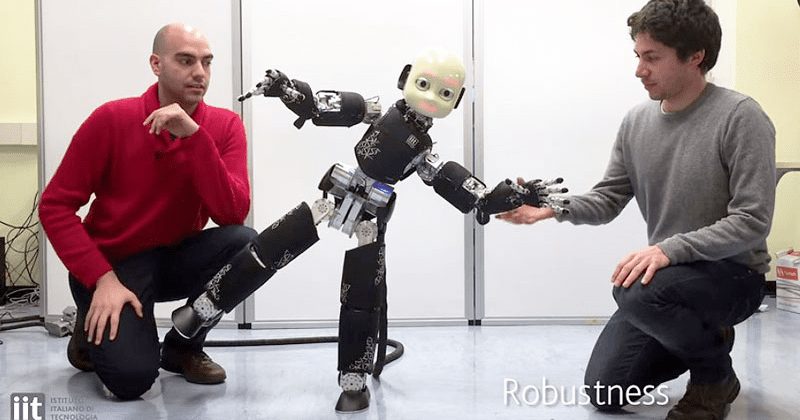As the researchers are simply doing so on the basis of iCub, a cognitive robotic platform with a human form of open source that was designed by the RobotCub Consortium of several European universities and built by the ITT. It is a three-foot-tall android with dimensions similar to those of a three-and-a-half-year-old child and it was actually designed to test the built-in cognition hypothesis, according to which the mind and the environment interact to give rise to mental and motor processes. The iCub humanoid is equipped with 53 motors that move the head, arms, waist, and legs, and has all kinds of sensors and cameras that allow you to watch and listen. In addition, it has the sense of proprioception, which informs the brain about the position and movement of the body parts, sense of movement, and the researchers are also working to give it a sense of touch as well. Its current skills include such diverse tasks as tracking through a visual guide with the optical marker on the floor, solving complex 3D mazes, archery, facial expressions, control of strength, grabbing small objects and the draw obstacles to avoid collisions. With this series of skills, now the ITT wants to add the possibility of flying, which would make iCub the first humanoid flying robot. To do this, researchers want to install jet engines in the hands and feet, which would give them multi modal locomotion. “Approaching humanoid robots and flying robots have a great technological benefit: a platform that combines these two natures can have flight capabilities, locomotion by contact and manipulation,” say these scientists. For the moment, the project is in the initial phase, and what they have done has been to develop a control algorithm to simulate the movement of the iCub with the jet engines installed on the hands and feet. The next step will be to consider the aerodynamic effects and other parameters that influence the flight. So, what do you think about this humanoid? Simply share your views and thoughts in the comment section below.
Δ


